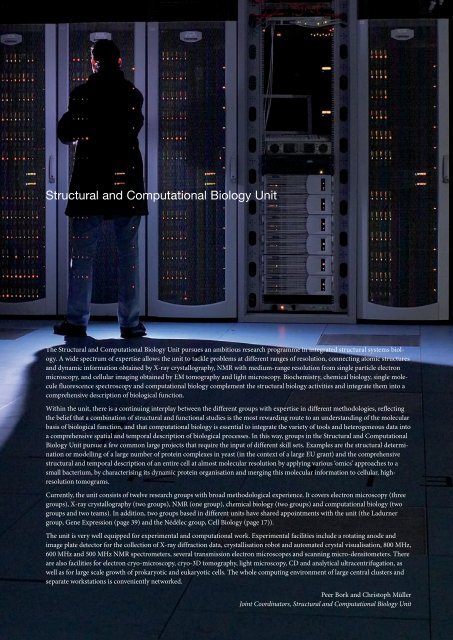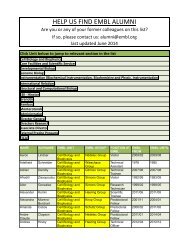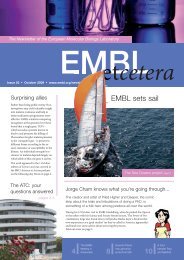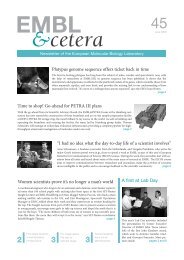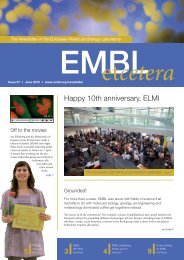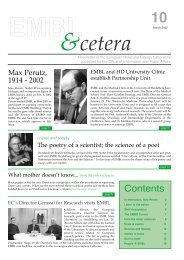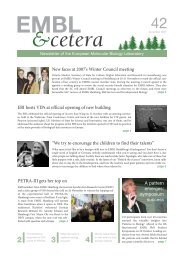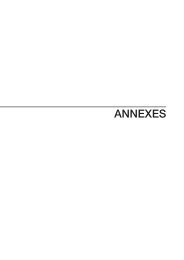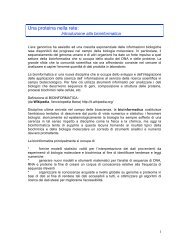ayout 1 - EMBL Grenoble
ayout 1 - EMBL Grenoble
ayout 1 - EMBL Grenoble
Create successful ePaper yourself
Turn your PDF publications into a flip-book with our unique Google optimized e-Paper software.
Structural and Computational Biology UnitThe Structural and Computational Biology Unit pursues an ambitious research programme in integrated structural systems biology.A wide spectrum of expertise allows the unit to tackle problems at different ranges of resolution, connecting atomic structuresand dynamic information obtained by X-ray crystallography, NMR with medium-range resolution from single particle electronmicroscopy, and cellular imaging obtained by EM tomography and light microscopy. Biochemistry, chemical biology, single moleculefluorescence spectroscopy and computational biology complement the structural biology activities and integrate them into acomprehensive description of biological function.Within the unit, there is a continuing interplay between the different groups with expertise in different methodologies, reflectingthe belief that a combination of structural and functional studies is the most rewarding route to an understanding of the molecularbasis of biological function, and that computational biology is essential to integrate the variety of tools and heterogeneous data intoa comprehensive spatial and temporal description of biological processes. In this way, groups in the Structural and ComputationalBiology Unit pursue a few common large projects that require the input of different skill sets. Examples are the structural determinationor modelling of a large number of protein complexes in yeast (in the context of a large EU grant) and the comprehensivestructural and temporal description of an entire cell at almost molecular resolution by applying various ‘omics’ approaches to asmall bacterium, by characterising its dynamic protein organisation and merging this molecular information to cellular, highresolutiontomograms.Currently, the unit consists of twelve research groups with broad methodological experience. It covers electron microscopy (threegroups), X-ray crystallography (two groups), NMR (one group), chemical biology (two groups) and computational biology (twogroups and two teams). In addition, two groups based in different units have shared appointments with the unit (the Ladurnergroup, Gene Expression (page 39) and the Nédélec group, Cell Biology (page 17)).The unit is very well equipped for experimental and computational work. Experimental facilities include a rotating anode andimage plate detector for the collection of X-ray diffraction data, crystallisation robot and automated crystal visualisation, 800 MHz,600 MHz and 500 MHz NMR spectrometers, several transmission electron microscopes and scanning micro-densitometers. Thereare also facilities for electron cryo-microscopy, cryo-3D tomography, light microscopy, CD and analytical ultracentrifugation, aswell as for large scale growth of prokaryotic and eukaryotic cells. The whole computing environment of large central clusters andseparate workstations is conveniently networked.Peer Bork and Christoph MüllerJoint Coordinators, Structural and Computational Biology Unit


